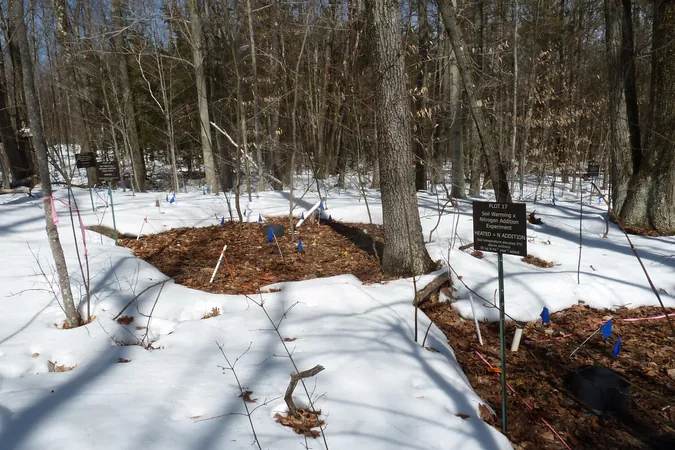
Surprising Research Suggests Northeastern Forests May Be Hardier Against Climate Change Than Thought!
2024-09-25
Author: Benjamin
Groundbreaking Study Overview
In a groundbreaking study, researchers at the University of New Hampshire (UNH) have unveiled that the impact of climate change on New England's forests might not be as dire as previously believed. Traditionally, scientists examined the effects of rising temperatures and increased nitrogen levels from fossil fuel combustion in isolation. However, this innovative research takes a unique approach by studying how these factors interact and affect forest ecosystems together.
Key Findings of the Research
The research team discovered that despite the dual pressures of elevated temperatures and nitrogen deposits, carbon storage in the soil remained stable. This resilience is largely attributed to enhanced belowground plant growth, particularly the processes related to root development and turnover. Melissa Knorr, a lab research supervisor at UNH, expressed her excitement about the study, noting its uniqueness as one of the longest-running experiments focusing on multiple global change pressures.
Methodology
The study, which was published in *Nature Ecology & Evolution*, utilized data from a 16-year investigation at the Harvard Forest Long-Term Ecological Research site in Massachusetts. Researchers exposed soil to a consistent warming of 5°C and added nitrogen at a rate of five grams per square meter per year. In previous studies at this renowned site, researchers had noted significant reductions in soil carbon levels due to warming alone. In contrast, prolonged nitrogen enrichment demonstrated an ability to increase carbon storage.
Implications of Findings
Serita Frey, a professor in the Department of Natural Resources and Environment at UNH and a co-author of the study, elaborated on the dynamics of this interaction, stating that the combination of warm temperatures and abundant nitrogen enhances belowground carbon inputs through increased plant growth. While microbial activity typically breaks down organic matter and releases carbon dioxide, the boost in vegetation provides a counterbalance, helping to maintain soil carbon levels and mitigating potential losses.
Context and Future Research
Incredibly, New England has experienced a temperature rise of 1.7°F over the last century, coupled with nitrogen deposition rates that remain substantially elevated—five to six times higher than pre-industrial levels. This excess nitrogen, delivered through atmospheric processes like rain and snowfall, poses risks to forest health by damaging plants and acidifying water sources, demonstrating the crucial implications for ecosystem stability.
Conclusion
These findings emphasize the significance of plant-soil interactions in forest ecosystems as pivotal in managing carbon absorption from the atmosphere. By providing a more nuanced understanding of how forests respond to multiple stressors, the research offers valuable insights into effective conservation strategies that could enhance carbon sequestration and promote forest vitality.
As conservation efforts become increasingly important in tackling climate change, this study sheds light on the potential resilience of Northeastern forests, indicating they could keep playing a vital role as carbon sinks in our ongoing battle against global warming. This could dramatically shift how we approach forest management and climate interventions moving forward!
Stay tuned, as these revelations could reshape the future of forest conservation and inform our strategies to mitigate the impacts of climate change across vulnerable ecosystems!









 Brasil (PT)
Brasil (PT)
 Canada (EN)
Canada (EN)
 Chile (ES)
Chile (ES)
 España (ES)
España (ES)
 France (FR)
France (FR)
 Hong Kong (EN)
Hong Kong (EN)
 Italia (IT)
Italia (IT)
 日本 (JA)
日本 (JA)
 Magyarország (HU)
Magyarország (HU)
 Norge (NO)
Norge (NO)
 Polska (PL)
Polska (PL)
 Schweiz (DE)
Schweiz (DE)
 Singapore (EN)
Singapore (EN)
 Sverige (SV)
Sverige (SV)
 Suomi (FI)
Suomi (FI)
 Türkiye (TR)
Türkiye (TR)